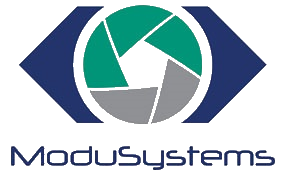
Which Manual Should I Use?
In order to provide the most relevant information with a minimum of clutter there is a separate manual for each product and method of use.
Snap2Motion
Snap2Motion is used to describe controller-resident programs a combination of block graphical programming and text oriented programming Many applications can be directed by the controller itself and have no need of host PC or PLC. Programs written in Snap2Motion are compiled and run in the native object code of the controller's processor. This makes application programs extremely fast operating at command rates of several Mhz. Even if a PC or PLC is used to direct the controller it is likely that Snap2Motion will still be used to delegate to the controller those time-critical tasks that cannot be effectively handled by the host.
ASCII Commands
This method uses 3 letter commands to direct the controller. As well as by a host, Ascii Commands can be sent manually from a terminal emulator acting as a host for convienting testing and problem isolation. This is a reactive interpreter with a Hash Table architecture implemented as a Snap2Motion application. This interpreter can be extended with new commands or tailored to meet application specific requirements.
Binary Commands with DLL
This method uses small and efficient binary data packets to perform controller operation. This protocol can support multiple controllers over one communication channel using either node or resource based addressing. Self-addressing ring topologies and node-addressed multidrop topologies are supported based on the communication method chosen. A Windows DLL is available for this protocol. Also implemented as a Snap2Motion application this can be modified to meet application specific needs.
Serial Commands with DLL
For operating systems other than Windows where serial communication is desired this method explains the low-level packet details necessary to direct the controller.
Modbus Slave
The popular Modbus protocol can be used to direct the controller through a mapping named "Modbus Motion Interface" (MMI). Modbus register operations direct the controller and report status usually with a single transaction. Modbus Slave protocols over RS232, RS485 and TCP/IP are supported allowing the controller to be directed through third party Modbus libraries available on a variety of operating systems and languages.
MotionLib32
This method permits a host PC to compile and download programs into the controller. Beyond resident programs that are saved as part of the project development, MotionLib32 allows a host PC to write a program, place it in the controller, and direct it for both maximum flexibility and maximum performance. This is a more advanced method best used when both flexibility and performance are required.
Custom Application
Requirements such as non-reactive protocols, tagged concurrent commands, and protocol impersonation for system integration convenience can be built as application programs to meet project specific needs.